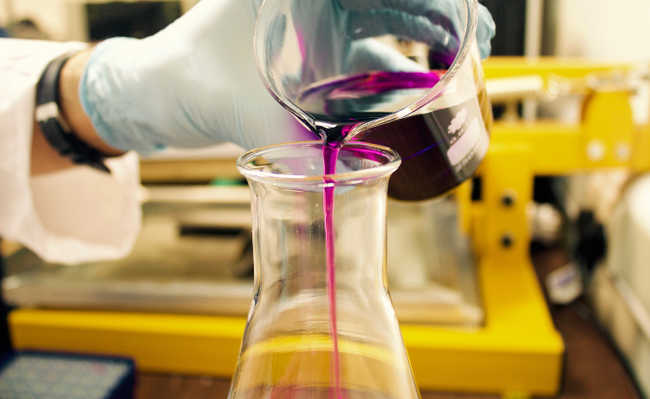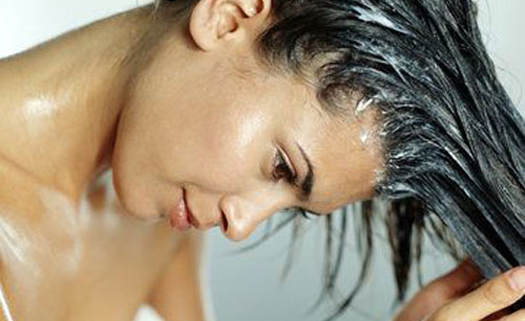Substances to avoid in cosmetics and hygiene products
Triclosan, formaldehyde and parabens are some of the substances you should know and avoid

Edited and resized image of Louis Reed is available on Unsplash
There are a variety of substances harmful to health, which are present in cosmetics, personal hygiene and cleaning products or environments. These substances usually have very complicated names that make memorization difficult, which makes the consumer's task even more difficult when checking the labels.
Therefore, the eCycle portal organized a list of harmful substances present in cosmetics that should be avoided or used with caution due to their harmful effects on human health and the environment as a whole.
- What are endocrine disruptors and how to avoid them
Triclosan
This substance is present in numerous products, such as soaps, toothpaste, deodorants and bactericidal soaps, being used as an antibacterial. The indiscriminate use (without proper need) of products with triclosan increases the occurrence of bacterial resistance, which disrupts the human body's defense system, facilitating contact with bacteria that are harmful to health. In addition to causing other harmful effects to health, such as the reduction of muscle functions, which can affect the heart, in addition to polluting water bodies, which affects the quality of the water (learn more: "Triclosan: undesirable omnipresence").
- Soap: types, differences and risks
- Homemade Toothpaste: Here's How to Make Natural Toothpaste
- Antibacterial soap: health hazard
Triclocarban
This substance has the same functions as triclosan. It is found mainly in bar soaps, as well as antiperspirants, deodorants, liquid soaps, facial cleansers and acne treatment creams. The problem involving triclocarban is related to the bioaccumulation process in aquatic organisms. This process causes triclocarban to be present at different levels of the food chain until it reaches humans. Therefore, human ingestion of triclocarban is very likely (due to the food chain cycle). As a result of its ingestion, studies show that triclocarban is able to deregulate the production of sex hormones and increase the chances of developing breast and prostate cancer.
- Understand the environmental impact of plastic waste on the food chain
- 18 Home Remedy Options for Pimple
Formaldehyde
It is a volatile organic compound (VOC) considered carcinogenic by the International Agency for Research on Cancer (IARC) and produced from another substance that is very harmful to health. The problem involving formaldehyde (formaldehyde - a name that appears on packaging) is related to its high concentration in the atmosphere due to anthropogenic emissions and its presence in cosmetics, such as enamels and hair straightening products. Health effects range from irritation in the throat, eyes and nose to nasopharyngeal cancer and leukemia.
- What is formaldehyde and how to avoid its dangers
Formaldehyde Releasers
These are substances that, in their manufacturing process, are contaminated with formaldehyde. Bronopol, diazolidinyl urea, imidazolidinyl urea, quaternium-15 and DMDM hydantoin constantly release small amounts of formaldehyde, which is very volatile and easily sheds from products such as soap. In addition to releasing formaldehyde, these substances have an antibacterial function, as does triclosan. In this way, they can also promote bacterial resistance.
- What constitutes soaps?
Coal tar or coal tar
It is mainly found in permanent hair dyes called coal tar. According to the study published on the platform PubMed, coal tar is associated with the emergence of cancer in animal tests. This compound is derived from the processing of charcoal, and in dyes it helps in the process of fixing the color. Coal tar is considered by the IARC to be carcinogenic to humans (group 1). Polycyclic aromatic hydrocarbons (PAHs) can be found in coal tar - PAHs are associated with heart problems.
Cocamide DEA
It is found in cleaning products such as detergents and in cosmetics such as shampoos. According to the IARC, it is possibly carcinogenic to humans. It can be absorbed through the skin and accumulate.
- Diethanolamine: know this possible carcinogen and its derivatives
BHA and BHT
BHA (butylated hydroxyanisole as packaged) and BHT (butylated hydroxytoluene) are found primarily in lipsticks, eye shadows, deodorants and antiperspirants.
The compounds are predicted by the US National Toxicology Program to be reasonably carcinogenic to humans based on animal experiments. Likewise, the IARC places BHA in group 2B as a substance that has sufficient evidence as to its carcinogenicity in animals, and that these results can be considered for humans, but it is not yet possible to say due to the lack of experiments with humans .
Lead
It is a heavy metal that is harmful to humans and the environment in high doses. It is present in the environment due to anthropogenic activities, especially by emission from foundries and battery factories. It can be found in the atmosphere in particulate form - these particles can be transported over long distances and accumulate by dry or wet deposition elsewhere.
Lead (Pb) or lead (in English) is related to the occurrence of cancer, depression, agitation, aggression, loss of concentration, IQ deficit, hyperactivity, menstrual cycle dysregulation, premature birth, Alzheimer's, Parkinson's, reduced cognitive abilities, among other disorders and diseases.
Routes of exposure to lead are oral, inhalation and skin contact. Several products use lead in their composition, such as paints, cigarettes, plates for electric batteries and accumulators, vitrified products, enamels, glass and rubber components.
Other sources of exposure to Pb are cosmetics and beauty products such as hair dye and lipstick. In Brazil, this metal is regulated by the National Health Surveillance Agency (Anvisa) and can only be present in hair dye with a limit of 0.6%.
- Lead: applications, risks and prevention
fragrances
They are substances found in perfumes, cosmetics and cleaning products that give the product its perfume. But many of them do not appear on the label and the worst thing is that many can be harmful to health. Phthalates found along with fragrances damage the endocrine system. These substances are called endocrine disruptors. Another study showed that some perfumes can cause allergic reactions and headaches in some people.
- Perfumes can contain toxics. Discover alternatives
parabens
Also known as Happy birthday (in English), are chemical products widely used in cosmetics for their antimicrobial and antifungal action. According to the FDA, among the products that may contain parabens are makeup, deodorants, moisturizers, lotions, enamels, oils and lotions for children, hair products, perfumes, tattoo ink and even shaving creams. You can also find them in certain types of foods and medicines.
- Know the problem and types of paraben
Paraben interferes with the endocrine system of humans and animals - it has an estrogenic activity - because of this it is considered an endocrine disruptor. These substances are gaining relevance, as even in small doses they can harm health and the environment. It's worth checking the product label to make sure there is no paraben in its formula.
Toluene
Also known as methylbenzene (toluene or methylbenzene), is a volatile substance with a characteristic odor, flammable and highly harmful to health if ingested or inhaled. The respiratory system is the main route of exposure to this substance, being rapidly transported to the lungs and bloodstream.
Depending on the intensity of exposure, irritation of the eyes and throat may occur. Intoxication effects such as headache, confusion and dizziness may occur if exposure is long. It is also known that toluene is a central nervous system (CNS) depressant, similar to the process that occurs with alcohol ingestion.
And despite this, we can be in contact with this substance without noticing.
Toluene can be present in glues, gasolines, solvents, cleaning agents and cosmetics. Other studies show that the domestic environment is one of the most relevant forms of exposure to toluene. Nail polish may contain this substance.
It is worth checking the products before buying and checking if they do not contain toluene in their composition. Remember that it can be represented as methylbenzene or with its English name, mentioned earlier.
oxybenzone
It is an organic compound that can be found in sunscreens and other cosmetics that have protection from ultraviolet rays. O oxybenzone or benzophenone-3, as identified on the packaging, absorbs type A (UV-A) and type B (UV-B) ultraviolet rays, which make up about 95% of UV radiation. This type of radiation is responsible for premature aging of the skin, as well as rapid tanning, because it penetrates into the deep layers of the skin. Thus, oxybenzone to protect against UVA also penetrates into the deep layers of the skin and causes many harmful health effects such as: allergic reactions triggered by exposure to the sun, cell mutation and dysregulation of hormonal processes. Due to the large amount of oxybenzone that is absorbed through the skin, the use of sunscreens with this substance should be avoided by children.
- Sunscreen: factor number does not guarantee protection
Boric acid
Also known as boric acid (in English) is a weak acid commonly used as an antiseptic, insecticide and as a flame retardant. It has weak bacteriostatic and fungistatic actions. In some people, contact with boric acid can cause allergic reactions, eye irritation and respiratory system.
- Boric acid: understand what it is for and what its risks
In low doses, boric acid does not pose a health risk. Boron is an element found naturally in our food and necessary for the proper functioning of our body, however in high doses it can cause problems.
According to studies, high doses of boron can lead to neurotoxicity, in addition to affecting the reproductive system in male animals.
Boric acid is not considered to be carcinogenic to humans. In high concentrations in the environment it can be harmful to plants and other living beings, so it is important to minimize its discharge into water bodies.
It can be found in antiseptics and astringents, nail polish, skin creams, some paints, pesticides, products to kill cockroaches and ants, and some eye care products.
If you have any type of allergy to this substance, pay attention to the package label to make sure that boric acid was not used in its composition.
dioxane releasers
Many cosmetics, such as shampoos, medicines and cleaning products, may contain substances that carry 1,4-dioxane, they are: polyethylene glycols (polyethylene glycols - PEGs), polyethylenes (polyethylene), polyoxyethylene (polyoxyethylene) and ceeareth, and the names in English are those that appear in the description of the packages.
1,4-dioxane or 1,4-dioxane (in English) is a volatile organic compound (VOC) and can be present in large amounts in treated water, causing effects such as: liver and kidney damage, liver cancer and nasal cavity cancer if inhaled. The compound is considered by the IARC to be possibly carcinogenic to humans. The so-called dioxins refer to a class of substances which are also related to 1,4-dioxane.
- Dioxin: know its dangers and be careful
Sodium lauryl sulfate
It is considered a surfactant responsible for removing oiliness, producing foam, allowing water to penetrate the skin or hair. It can be found in cleaning products and many cosmetics such as shampoos, makeup removers, bath salts and toothpaste. Sodium lauryl sulfate and sodium lauryl ether sulfate also known on packaging as sodium lauryl sulfate and sodium lauryl ether sulfate, respectively, are harmful to health by triggering allergic reactions. Rumors about the possibility of these compounds being carcinogenic cannot yet be confirmed, due to lack of scientific evidence.
- Sodium lauryl sulfate: what is it anyway?
retinol palmitate
Or retinyl palmitate (in English) is a derivative of retinol. In the human body, retinol is a form of Vitamin A. This micronutrient is necessary for the proper functioning of the eyes, it is essential for the growth and development of children, it also participates in the body's defense, helping to keep the mucous membranes moist, like the nose, throat and mouth.
Its deficiency, in addition to causing night blindness, that is, the difficulty to see well in the twilight, can cause changes in the skin, increase the severity of infections and growth problems in children.
One study indicated that retinol palmitate (a vitamin A derivative) contained in sunscreens may increase the rate of skin cancer growth. The carcinogenic effect is due to the fact that retinol palmitate forms free radicals in the presence of solar radiation, due to UVA and UVB rays - these radicals end up compromising the structure of the DNA, which can lead to cancer.
THE Food and Drug Administration (FDA), an American body that oversees and authorizes the trade in food and cosmetics, argues that more studies are needed on this topic.
If you have any doubts about the safety of using any type of sunscreen, consult a dermatologist and avoid brands that contain retinol palmitate and retinol derivatives in their composition.
Phthalates
They are a group of chemical compounds used as plasticizers (making plastics more malleable) and solvents. Phthalates are present in cosmetics and in various types of plastics: in PVC, in shower curtains in bathrooms, medical plastic materials, children's toys, raincoats, adhesives, enamels, perfumes, soaps, shampoos and hair spray . Contact with phthalates can be through the use of plastics in medical procedures, children can put plastic toys in their mouths, cosmetics that come into contact with the skin and also through the airways, food or beverages that have had contact with plastics they have phthalates and, in addition, contact can also occur through the water that passes through the pipes, as the phthalates used in PVC pipes are not chemically bonded to the material and come out in the water that passes through the pipes.
The health effects caused by phthalates involve hormonal dysregulation and possible impacts on the reproductive system. Other effects such as skin irritation were seen in tests for large amounts of phthalates. Animal tests have associated the presence of phthalates in the body with the appearance of tumors, as well as the unregulated proliferation of organelles called peroxisomes, thus leading to the appearance of cancer. The IARC classifies phthalates as possibly carcinogenic to humans (group 2B). Phthalates can be found in packaging with the names: DBP, DEP, fragrance, phthalate, DMP, DINP and DEHP.
- Phthalates: what are they, what are their risks and how to prevent
Fluorine
Or fluorine (in English) is a chemical element that is found in nature in the form of fluoride.It is present in treated water, natural waters and all foods that contain fluoride, varying concentrations depending on the food, such as vegetables - they contain more fluoride as they absorb from water and soil. According to the Environmental Company of the State of São Paulo (Cetesb), in addition to vegetables, fish contain high concentrations of fluoride. Toothpaste, chewing gum, medications and toothpaste also contain fluoride. The absorption of fluoride by the body, when ingested through water, is practically total, but when ingested by food, its absorption is partial.
When fluoride is ingested, a large part of it is absorbed by the bones and another part by the teeth, this is where the danger of ingesting too much fluoride resides. The success of fluoride in the past in controlling caries in the population has become a matter of concern on the part of some researchers. The long period of time that public water supplies were and are still being fluoridated can bring some health problems in the population, especially in children, where excess fluoride can cause dental fluorosis.
Hydration inefficiency
An experiment conducted by the National Institutes of Health (INS) of the United States compared the efficiency of using plant-based moisturizers and vegetable oils, such as wheat germ oil and wheat extract. aloe vera. The research analyzed physicochemical factors of each product and concluded that the formulations containing wheat germ oil and wheat extract aloe vera produced greater skin hydration compared to formulations that contained them separately.
This means that using herbal moisturizers is less efficient than using vegetable oils for skin hydration. Thus, in addition to containing substances harmful to health in their composition, chemical moisturizers are not totally effective in preventing water loss and skin dryness.










